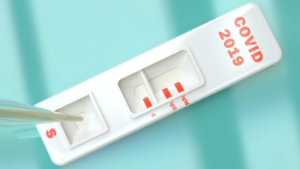Home » Commentary » Opinion » Antibody test misconception
· Ideas@theCentre

 Italian health authorities recently reported that 57% of the residents of Bergamo, a city in Lombardy, have COVID-19 antibodies in their blood. Since the body’s immune system produces antibody proteins to combat disease, health authorities concluded that more than half of Bergamo’s population had contracted COVID-19. Is this a reliable finding? Is it applicable to Australia? To answer these questions, let’s look at how test results are interpreted.
Italian health authorities recently reported that 57% of the residents of Bergamo, a city in Lombardy, have COVID-19 antibodies in their blood. Since the body’s immune system produces antibody proteins to combat disease, health authorities concluded that more than half of Bergamo’s population had contracted COVID-19. Is this a reliable finding? Is it applicable to Australia? To answer these questions, let’s look at how test results are interpreted.
An infallible antibody test is one that produces positive results for all those who have had the disease and negative ones for those who have not. In practice, such perfection is rare. Errors in test administration, timing, or reporting always produce some false results.
A positive antibody test does not always mean you have had COVID-19. For every 100 people whose blood contains antibodies to COVID-19, the best of the currently available antibody tests correctly identifies 99. These tests are said to have a ‘sensitivity’ of 99%.
At the same time, the best tests accurately assign negative results to 99% of those who have never had COVID-19; only 1% are misclassified as positive. With a sensitivity of 99% and a ‘false-positive’ rate of only 1%, antibody tests are exceptionally reliable. Nevertheless, to interpret their results, we must consider the prevalence of COVID-19 in the population.
Thus far, 7,300 Australians have been diagnosed with COVID-19; a test with a sensitivity of 99% would detect almost all of them. So far, so good.
But what about the rest of the Australian population—around 25 million people? A test with a 1% false-positive rate would misclassify 250,000 of them as positive. Because the vast majority of positive results would be false-positives, the probability that a person with a positive test has COVID-19 antibodies would be very small (only around 3%).
There is reason to believe that the prevalence of COVID-19 in Australia may be much higher than the cases reported so far; mild illnesses may have slipped by undetected.
Some epidemiologists have estimated that the prevalence of COVID-19 could be 50 times higher than the number officially identified. Applying this figure to Australia, we would expect 365,000 Australians to have had COVID-19. An antibody test with a sensitivity of 99% would correctly identify more than 360,000 of them.
However, with a false-positive rate of 1%, the test would also produce around 246,000 false-positives. As a result, those with positive tests would have only around a 60% chance of having been infected with COVID-19.
To avoid giving people who test positive for antibodies the potentially false sense of security that they have had COVID-19, it will be necessary to repeat positive tests to increase the reliability of the result.
As the COVID-19 pandemic plays out, you will be hearing a lot about tests and their results. Whenever you encounter a reference to a medical test’s ‘accuracy’, remember that
the meaning of a positive result relies not on a single figure but on three: a test’s sensitivity, its false-positive rate, and the prevalence of the disease in the population.
As we have seen, even an excellent test, with a sensitivity of 99%, will produce spurious results when the prevalence of a disease is low.
Antibody test misconception